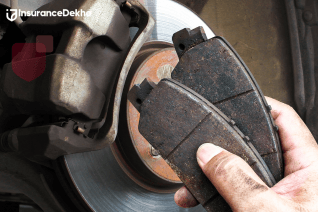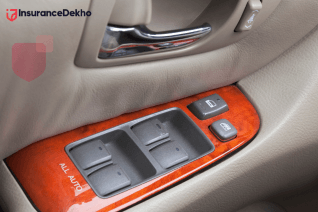Brake Pad Replacement 101: Lifespan, Signs & Safety Tips
Is your car trying to tell you something? Strange noises, delayed stops, or a shaky brake pedal could be signs that your brake pads are worn out. These small yet vital components play a crucial role in keeping you safe on the road. In this guide, we’ll walk you through everything you need to know about brake pad replacement, how they work, what affects their lifespan, warning signs to watch for, and key safety tips.

What Are Brake Pads and How Do They Work?
Brake pads are essential parts of a vehicle’s braking system. When you press the brake pedal, hydraulic pressure is generated, pushing the brake pads against the brake rotors. This creates friction, which converts the car’s kinetic energy into heat, effectively slowing it down or bringing it to a stop.
Factors Influencing Brake Pad Lifespan
Brake pads is most crucial component for ensuring vehicle safety and it is required to understand the factors which can influence the lifespan of brake pad and some of which is as follows:
-
Driving Conditions and Habits
-
Aggressive Braking vs. Smooth Driving
Hard braking and rapid acceleration wear out brake pads faster. On the other hand, smooth, consistent driving habits help extend their lifespan.
-
City vs. Highway Driving
City driving involves frequent stop-and-go movement, which puts more pressure on the brakes. In contrast, highway driving involves fewer stops, leading to less brake wear.
-
Vehicle Type and Load
-
Sedans, SUVs, and Commercial Vehicles
Heavy-duty vehicles like SUVs and commercial trucks carry more weight, increasing strain on brake pads and reducing their life span. Lighter vehicles typically see less brake wear.
-
Frequent Heavy Loads or Towing
Carrying heavy loads frequently or towing adds pressure to the braking system, accelerating wear. In such cases, consider using high-performance brake pads.
3. Brake Pad Quality
-
OEM vs. Aftermarket
OEM (Original Equipment Manufacturer) pads are designed by the car manufacturer and match factory specifications. Aftermarket brake pads are made by third parties and can be equally reliable and cost-effective, with some offering better performance or durability.
4. Material Composition
-
Organic Pads: Quieter but wear out faster.
-
Semi-Metallic Pads: Durable and ideal for heavy-duty use.
-
Ceramic Pads: Long-lasting and quiet, often used in premium or performance vehicles.
When Should You Replace Brake Pads?
General Guidelines
-
Replace brake pads every 25,000 to 50,000 km, depending on driving habits and conditions.
Manufacturer Recommendations
-
Always consult your vehicle’s owner manual or a trusted mechanic for guidance specific to your car.
Regular Inspections
-
Visual Check Every 10,000 km
Examine the brake pads for wear and thickness. -
Professional Assessment During Routine Servicing
Let your mechanic assess the brake condition during regular vehicle maintenance.
Warning Signs That Indicate Brake Pad Wear
1. Audible Clues
-
Squeaking or Squealing: Common signs of worn-out pads.
-
Grinding Noise: Indicates the pads are completely worn, and the metal is scraping the rotor.
2. Performance Issues
-
Reduced Responsiveness: Longer stopping distances are a major safety concern.
-
Brake Pedal Vibration: Could indicate warped rotors or uneven pad wear.
3. Vehicle Behavior
-
Pulling to One Side: May be due to uneven brake pad wear or caliper issues.
Why You Shouldn’t Delay Brake Pad Replacement
-
Damage to Rotors: Worn-out pads can cause grooves or warping in rotors, leading to more expensive repairs.
-
Higher Repair Costs: Ignoring brake pad wear can result in damage to other parts of the braking system.
-
Safety Risks: Faulty brakes can cause collisions or accidents.
Brake pads are one of the most important safety components in your car. Ignoring them can not only put your safety at risk but also lead to expensive repairs. By paying attention to your driving habits, inspecting the brake system regularly, and replacing brake pads on time, you can ensure optimal braking performance and peace of mind on the road.














































